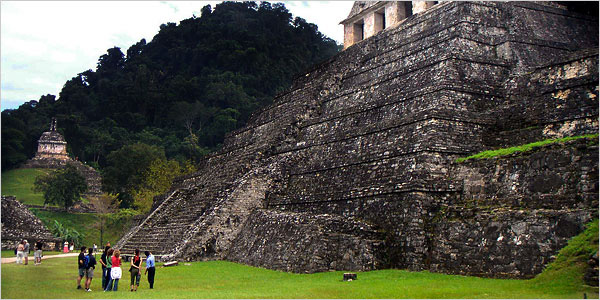 |
 |
 |
 Travel & Outdoors | December 2006 Travel & Outdoors | December 2006  
Chiapas: Once Shunned by Tourists, Now Open for Business
 Michelle Higgins - NYTimes Michelle Higgins - NYTimes


| | Visitors admire the ruins in Palenque, Chiapas. (NYTimes) |

The Mexican state of Chiapas may be better known in the United States for the Zapatista uprising there in the mid-90s than for its biodiversity or archaeological treasures, but that might soon change.

Over the last six years, Chiapas — a southern state on the Guatemalan border — has invested about $18 million in tourism infrastructure, from new roads to eco-lodges in forest reserves. After a $70 million overhaul, Puerto Madero, its 30-year-old seaport, now called Puerto Chiapas, reopened in February with a deeper harbor and a new tourist pier to accommodate large cruise ships. Already 10 ships are expected to visit for the first time in 2007, including ships from Holland America, Royal Caribbean, Celebrity Cruises and Regent Seven Seas.

Meanwhile, at least two American adventure travel companies, Mountain Travel Sobek and Austin-Lehman Adventures, are offering tours to the region for the first time next year. Weeklong itineraries begin in the $2,300 range and blend eco-tourism activities like river boat rides and jungle hikes with cultural excursions to ancient Maya ruins and indigenous markets.

In its Consular Information Sheet on Mexico, the State Department recommends caution in traveling to Chiapas, citing “sporadic outbursts of politically motivated violence” from time to time and violent criminal gang activity, aimed mostly at illegal migrants along the state’s southern border.

Tourism officials are quick to point out that the Zapatista insurgency has been inactive for years. In fact, the attention the movement brought to Chiapas is helping make their job a bit easier today. Because of the Zapatistas, notes Luis Valadez Coria, the under secretary of Touristic Development of the Chiapas Tourism Board, “the entire world knew the word Chiapas.” | 
 | |
 |



